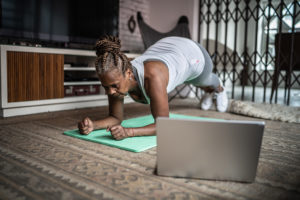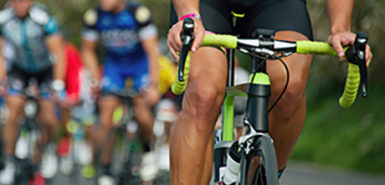
Most people have romanticized grand fitness goals.
They’ve vowed to run a marathon, dreamed of hiking Denali, or longed to bench-press their body weight—usually all while sitting on the couch.
Goal-setting experts say that while those big ambitions genuinely motivate some people, they’re not helpful for many.
Like abandoned New Year’s resolutions, these demoralizing setbacks can convince people they’ll never be able to get fit.
That’s why more experts advocate setting tiny goals and then cleverly linking them to behaviors you are already doing.
The idea of starting small, of course, has been around forever. But the approach has been building buzz, in part fueled by the publication Tiny Habits, a book by Stanford University behavior scientist BJ Fogg.
For Fogg, major change started with bathroom breaks—and the promise to do two pushups every time he used the restroom. As he suspected, the energy from accomplishing that small goal motivated him.
Soon he wasn’t just doing more pushups, but tweaking his diet, too.
He ultimately lost 20 pounds.
The butterfly effect
It helps to think of these smaller steps in the context of the butterfly effect, according to Phillip Adler, PhD, manager of Spectrum Health Group’s athletic training team.
It may be just the ticket for those who doubt themselves due to a history of failed fitness goals.
Initially, the physical changes are imperceptible. But minor actions set off a chain of feeling good about yourself—a term experts call self-efficacy—that can lead to more changes.
“The hardest part is getting started,” Dr. Adler said.
The first step? Getting honest about what you like and don’t like to do.
“If you don’t enjoy running, you’re not going to be able to motivative yourself to train up for a 5K, even if that’s something you think you should want to do,” he said.
Instead, he suggests looking for things you already do and then combining them with something new, much like tacking a pushup or two onto every bathroom break.
Eventually, little behaviors become habits. And the more effortless they become, the better you feel about fitness, increasing the likelihood you’ll make additional changes.
Some of Adler’s favorites:
One-leg balance habit
“Balance is something that becomes more important as we get older,” Dr. Adler said. “And we often don’t pay much attention to it.”
When brushing his teeth or doing the dishes, he’ll lift one foot slightly off the floor. Try working up to 30 seconds at a time. “You’re not necessarily building strength with these small moves, but you are boosting your sense of proprioception,” he said.
Once it’s become a habit? “Start adding some heel raises in between the single-leg stands.”
Step-boosting habit
“Commit to parking at the farthest end of the supermarket parking lot,” he said. Want to trade up? Once inside, commit to an extra lap, from produce to the dairy aisle.
Stairs-are-my-friend habit
Try to notice if you always start stairs with the same leg—and then make a conscious effort to switch. “And try walking down the stairs at a pace two times slower than you went up to focus on leg strength,” Dr. Adler said. “You may need to hold the railing at first, but eventually, try it without.”
Add more exercise by creating extra trips up and down the stairs.
Take-a-seat habit
Since most of us spend the day sitting and then standing, try turning them into chair squats. “Every time you sit down in your desk chair, stand up and sit down again.”
Notice how much you rely on your hands and arms to sit up and down: Can you rise to a stand or lower to a sit without them?
Trade up to a few wall squats a few times a day.
While-you-wait habit
It takes a few minutes for coffee to brew, toast to pop, or the microwave to beep. Use that time for counter pushups or gentle stretching.
I-hate-this-ad habit
Use commercial breaks to hold a plank, boosting core strength. Squeeze your glutes, and aim to hold for 20 to 30 seconds.
All these moves are likely invisible to anyone but you, he said. “But they feel like private wins.”
A good piece of advice as you try these activities: Don’t take your eyes off the prize.
Once these habits become ingrained and you get closer to larger fitness goals, it’s a good idea to look at the bigger picture.
Another team of researchers, also from Stanford University, gave subjects a mundane office project to accomplish, then divided them into three groups.
The ones given subgoals significantly outperformed those shown only the big-picture goal of the project, with more than 39% reaching the target, compared to about 34% of those with only the end goal.
But a hybrid group, which continually reviewed sub-goals as well as the desired end result, had the best follow-through, with about 57% achieving their goal.
The point of all these mind games? Shake off the all-or-nothing thinking that sabotages fitness efforts for so many people.
“When you start focusing on small gains, you’re less likely to say, ‘If I get on the treadmill, I have to do it for 30 minutes or it doesn’t count,'” Dr. Adler said. “Even five minutes is a plus.”
 /a>
/a>
 /a>
/a>
 /a>
/a>
I am super curious about this suggestion: “Try to notice if you always start stairs with the same leg—and then make a conscious effort to switch” – why is this effective? My co workers and I would love to hear the explanation- it definitely felt different when I started the stairs with my non dominant leg! But why?!?